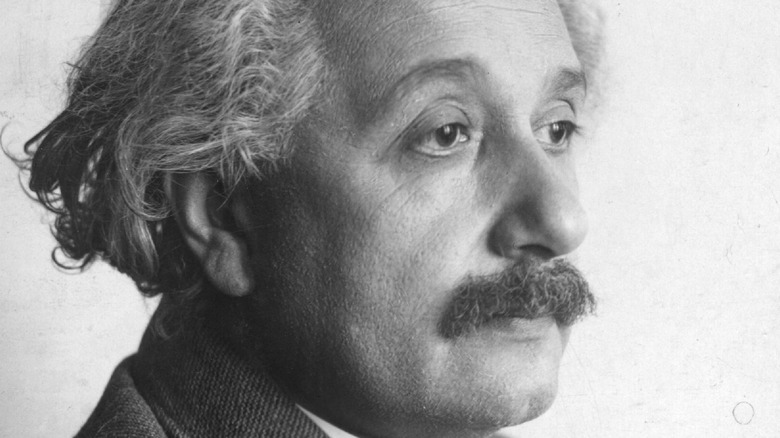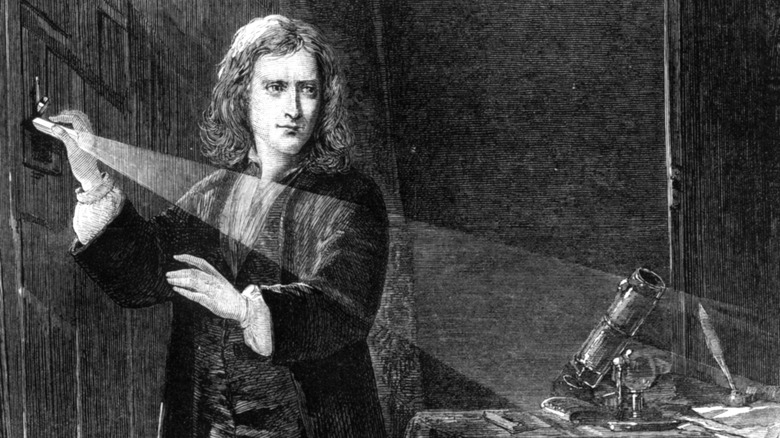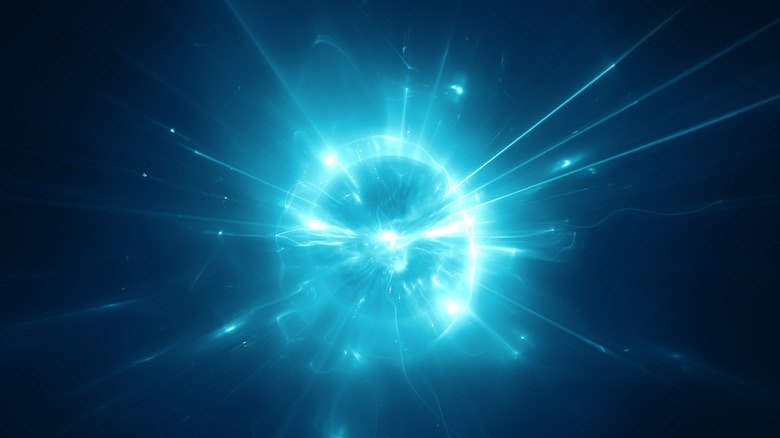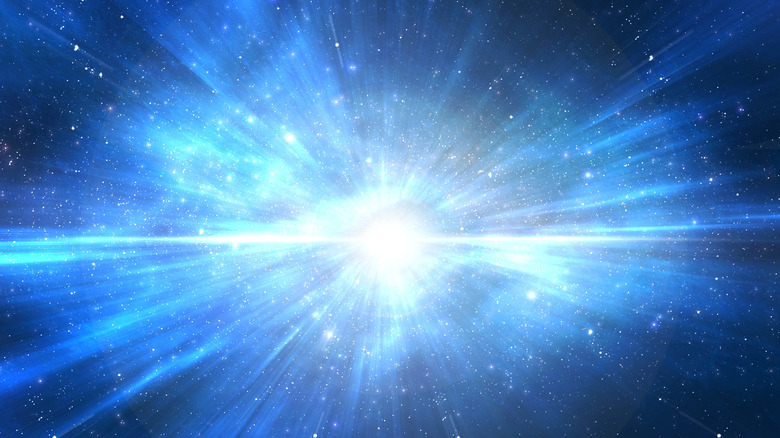Why Einstein's Theory Of Gravity Is Under Scrutiny Following A New Study
Albert Einstein is often lumped together in the group of the world's most renowned geniuses, with the likes of Nikola Tesla, Isaac Newton, and Leonardo Da Vinci, just to name a few. Einstein's most famous contribution to science was his theory of general relativity, giving us the equation E = mc2. His ideas were revolutionary for the time, and they changed the world and physics as we knew it, allowing us to understand the universe in a deeper manner. But after all these years, scientists are still holding his ideas to scrutiny, and it turns out there may be some error in his discoveries (via LiveScience).
But in order to understand how Einstein's theory may have discrepancies, it's important to look at the history of how general relativity became the leading theory in the physics community. Before Einstein, many physicists subscribed to the ideas of Isaac Newton, who proposed universal gravitation, the idea that every particle in the universe attracted one another via gravity, and that this occurred everywhere in the cosmos, according to Openstax.
Before Einstein
There were some errors in Isaac Newton's theory, however, and Albert Einstein sought to resolve them. For the most part, Newton's theories on gravity held up to scientific scrutiny, and for a long time, the vast majority of physicists supported his idea. However, something that was hard to explain using these laws was the ability for light to travel, according to Space.com. Thus, the idea of the ether came into being.
This ether concept was believed to be a type of energy source that acted as a medium across the entire universe, coming into contact with every single particle without being able to be measured because it was constant and never changing, according to Britannica. For the most part, the ether was universally accepted, but one experiment looked to prove the existence of the ether once in for all, the Michelson-Morley experiment. The researchers were looking to track Earth's movement through the ether and compare the light levels with light levels perpendicular to the trajectory path and see if there was a difference, which would prove the existence of the ether. However, they found no change, and physics as they knew it was turned on its head (via Britannica).
Special Relativity
As physicists entered a frenzy to deal with the catastrophic blow the scientific world had been dealt, Albert Einstein came to fix the issue with his idea of special relativity. Einstein proposed that electromagnetic waves, which included light, were universal constants. Objects could never surpass the speed of light; rather, the mass only becomes increasingly difficult with more and more density (via Space.com).
Einstein explained this idea with the example of a hypothetical train. Imagine that there are two people, one on the outside of the train at the station and the other on board, both observing two trees at opposite ends from one another. The train is moving at 99.5% light speed and the person at the station is moving relatively normally to the speed of Earth's rotation around the sun. Then, a storm occurs, and lightning strikes the two trees at the same time. Einstein pointed out that the observer moving near the speed of light would see the tree ahead of them being struck first because they are moving faster towards that tree than the other, thus proving that time is relative, not the speed of light, according to Space.com.
General Relativity
Einstein's theory of special relativity was published in 1905, but it took another 10 years for him to devise his theory of general relativity. Einstein came to the conclusion that objects in the spacetime continuum actually "bend" space itself, thus creating the effect of gravity. To better picture this effect, imagine holding a blanket perfectly flat at all four corners and having someone put a bowling ball or some other spherical object on the blanket. It would fold, wouldn't it? This is exactly how Einstein thought gravity worked, and it turns out he was correct.
In order to prove his hypothesis, he needed to predict this curving of spacetime in real-time. A group of researchers traveled to different points in the Southern hemisphere to observe a solar eclipse, but more specifically, stars during this event. Normally, Einstein's theory would've been hard to test, since the sun blocks out other light coming from different celestial bodies. With the sun being darkened by the eclipse, however, researchers would be able to photograph and compare with Einstein's predictions of deflection. When the pictures were taken, Einstein's equations held true, and thus much of the scientific community accepted his idea of general relativity, according to Britannica.
Weird world of quantum mechanics
Albert Einstein may not have been completely right about everything, however, and some new studies show that there may be some slight problems with the theory of general relativity. For one, there is the quantum problem. Einstein proposed that empty space, known as the vacuum, has an energy that cannot be detected because it doesn't change. This energy gravitates, but in a repulsive manner — pushing things away, according to LiveScience. Therefore, it actually pushes things away from one another, which helps explain how the universe is actually expanding.
But the problem lies in the mathematical equations of general relativity itself. The theory proposes that the energy needed for the rate of expansion of the universe would be much larger than what we actually see, which may mean that there is something else contributing to this acceleration. The main problem scientists observing this phenomenon come into is something dubbed the Hubble tension. This occurs when two different measurements are used for the Hubble constant: one being the light remaining after the Big Bang and the other being the rate of universal expansion. These measurements are used to predict the rate of acceleration of universal expansion (via Live Science).
The edge of what we know
Researchers conducted a test to try to resolve the Hubble tension, and they did this by examining the expansion of the universe, the curvature of matter, and the curvature of light all at the same time. They then measured the variables by examining the radiation left over from the Big Bang, supernovas, and the way galaxies were structured. They compared their results for what the variables should be compared to Einstein's own model and found that there might be some statistical error between the different models, according to LiveScience.
However, this is most likely the result of a lack of knowledge, says Advanced Science News. One of the scientists who worked on this study, Levon Pogosian, claimed that he believes there might've been other particles, or interactions with dark matter, during the early days of the universe that might've interfered with the expansion of the universe in ways we can't fully comprehend today. If that is the result, there will need to be some drastic changes to the way physicians look at the universe. And who knows, maybe this is a stepping stone to our own modern-day version of a groundbreaking discovery that shatters everything we think we know. Perhaps that's the beauty of it all, and the purpose of science itself.





